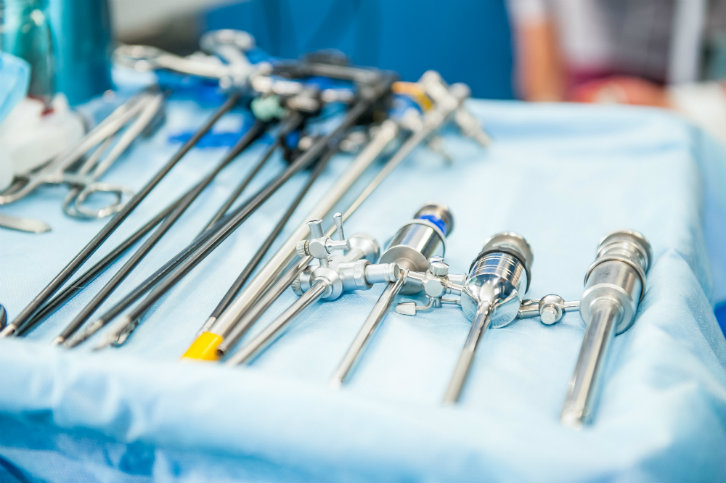
There are plenty of factors to consider when deciding which bariatric procedure is right for you. Perhaps the most important among them is whether or not a procedure is reversible or permanent, and how this impacts your overall weight loss.
Considerations like your physical health, the amount of excess weight you need to lose, and your personal weight loss preferences all play a role in this important decision. Is a reversible or permanent weight loss procedure right for you? Before you decide, let’s take a look at what reversible and permanent means when it comes to bariatric surgery.
What Makes a Bariatric Procedure Reversible vs. Permanent?
In general, a procedure is reversible when a device is added to the body to help restrict calorie intake. In reversible bariatric procedures, these devices are designed to be removed at a later date. Usually, these types of procedures don’t include any sutures or incisions, and the devices can be removed without any permanent changes to the body.
Reversible bariatric procedures include:
A procedure is considered non-reversible when actual surgical changes are made to the structure of the stomach and/or intestines. These changes are usually permanent, unless a revision or reversal surgery is attempted.
Non-reversible bariatric procedures include:
Here’s a look at the different types of permanent and reversible bariatric procedures in more detail.
Reversible Bariatric Procedures
Gastric Balloon
The procedure: A deflated silicone balloon is placed in the patient’s stomach through the mouth and esophagus. It’s then inflated to the desired size with a saline solution, which restricts the amount of food that can be in the stomach.
Why it’s reversible: This procedure is reversible because, in most cases, the balloon is removed after 6 to 12 months. Gastric balloons are rarely kept in the body longer than this because the risk of deterioration increases after one year.
Lap-Band
The procedure: Small incisions are made in the abdomen, through which laparoscopic tools are used to place an inflatable band around the top part of the stomach, creating a small pouch. A port is implanted under the patient’s skin, which is used to inflate the band with saline through the port.
Why it’s reversible: Using the port under the patient’s skin, the doctor can adjust the size of the inflatable band quickly and easily. If needed or desired, this band can be removed entirely.
Pros of Reversible Bariatric Procedures
- Generally involve fewer incisions and sutures
- Faster recovery time in comparison with permanent procedures
- Easier adjustment can help reduce side effects without surgery
Cons of Reversible Bariatric Procedures
- May result in weight regain after removal
- Generally have lower rates of total excess weight loss
- Require a foreign object to remain in the body
Non-Reversible Bariatric Procedures
Endoscopic Sleeve Gastroplasty
The procedure: Through an endoscope inserted into the mouth and down the esophagus, sutures are made in the stomach to make it smaller. There are no incisions. The result is a stomach that is long and thin, like the shape of a sleeve, which restricts food intake.
Why it’s considered permanent: While no stomach tissue is removed, the sutured stomach does heal into the sleeve configuration that was created, so the change is usually permanent. It is reversible to a degree, but because of the nature of the procedure, a reversal may result in complications.
Gastric Sleeve
The procedure: Small incisions are made in the abdomen, through which the surgeon uses laparoscopic tools to remove about 75% of the stomach and staple the remaining portion together, leaving a long, thin portion that resembles a sleeve.
Why it’s considered permanent: This surgery is considered permanent because a large portion of the stomach is removed.
Gastric Bypass
The procedure: During gastric bypass, the stomach is divided, creating a small top section and a larger bottom section. The upper part of the small intestine is also divided into a Y shape; one part of the Y attaches to the new smaller pouch, and the other part of the Y attaches to the lower part of the small intestine. This allows digestive juices to reach food entering the stomach.
Why it’s considered permanent: The structural changes are significant enough that this procedure is usually considered permanent.
Pros of Permanent Bariatric Procedures
- Often result in faster weight loss
- Patients often lose a larger percentage of excess weight
- Reduces the chances of future weight regain
Cons of Permanent Bariatric Procedures
- Though rare, severe complications may require additional surgery
- Revision or reversal surgeries are associated with higher rates of complications
- Usually have longer recovery periods
Can a Permanent Bariatric Procedure Be Reversed?
Procedures like gastric bypass and gastric sleeve are not designed to be reversed because they result in significant changes to the body. Other types of permanent procedures can be surgically reversed, but the risk of complications usually increases when reversal is attempted.
Most bariatric surgeons will strongly recommend against reversal for these types of procedures unless a patient is experiencing severe side effects that impact their daily life. In some cases, a surgical revision is preferred, since it will avoid some of the weight regain associated with surgical reversal while eliminating or significantly reducing side effects.
Even in cases where postoperative side effects are significant, it’s possible to manage these side effects without ever returning to the operating room. Side effects that can be managed without revision or reversal include:
- Nausea and vomiting
- Constipation
- Acid reflux
- Stomach pain
- Trouble swallowing
- Ulcers
Check out our blog post about how to manage postoperative side effects from bariatric surgery, or ask your doctor about surgical reversal during your initial consultation.
Get Help Choosing the Right Bariatric Procedure for You
The decision about which bariatric procedure is best for you — and whether it’s permanent or reversible — should never be rushed. Your bariatric surgeon will be able to give you more details about complications, side effects and success rates associated with each type of procedure. They can also answer any questions you have about reversible vs. permanent bariatric procedures during your initial consultation.
If you have questions about reversible and non-reversible weight loss procedures, or want to schedule a free consultation with a bariatric surgeon, contact us at Soma Weight Loss.




